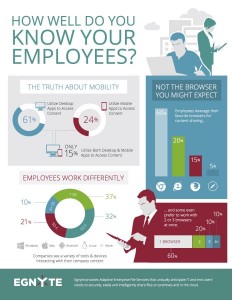
Image by Rawpixel.com
For businesses in the financial services industry, the disruption caused by technology-led changes has been non-stop.
The scope of fintech has grown way beyond the basic functionalities of online banking, and now encompasses developments that extend to messaging technology for marketing financial services, 24/7 virtual assistants, mobile apps, voice banking, social media integration tools and more.
This course of constant innovation is propelling the market forward, while demanding the attention of banks and credit unions that ought to remain competitive in order to satisfy the ever-evolving needs of consumers.
One of the key factors driving industry changes is consumer behaviour – and more specifically, millennial behaviour. While many people may think that marketing to millennials isn’t much more than a buzzword, the truth is that this diverse group of consumers who are now aged between twenty and thirty-something make up a very large percentage of the population. In the UK, millennials are considered the most valuable demographic group.
So, banks, credit unions, mortgage companies and businesses in the wider financial space who are keen on achieving sustainable growth need to invest time and money into understanding the demands of this highly relevant group of consumers.
Millennials have been heavily influenced by the ease of technology in most aspects of their life. When it comes to banking, their expectations are just as high; low fees or no-fees banking and excellent customer service are just a couple of their challenging demands.
An effective strategy for banking institutions is to invest in digitalising processes with the latest technology that can aid in reducing costs and improving customer service.
Here’s 6 of the most interesting fintech trends that can help banking organisations to stand out in the competitive landscape:
1- Live chat for customer service
Traditionally, banks have limited availability and opening hours that don’t work for many customers, which ends up causing much frustration. But more and more banks have started to understand the challenge this represents for customers and are moving away from traditional processes.
Live chat platforms are growing in popularity as a channel that provides ease of communication and quick answers for customers.
Financial institutions can learn from cases like modern bank Monzo, who adopted live chat for support and has seen outstanding results in terms of customer satisfaction.
The UK-based banking app offers a ‘help’ section within their platform with practical information; and an instant messaging channel for customers to reach out and report problems in a friendly chat environment, to get instant answers from the bank’s representatives.
With instant chat and a help desk section full of handy articles, Monzo has reduced communication friction to a minimum, as well as time spent by agents on the phone to solve problems.
2- Support chatbots, AI and virtual assistants
Following closely on the trend driven by the messaging revolution, is the rise of artificial intelligence in banking. The eminent presence of chatbots helping out thousands of customers on a daily basis is becoming the new normal, not just in banking, but in many industries.
Chatbots or robo-advisors can be a great resource to assist customers in a speedy manner and at any time. They can take on simple queries or more complex tasks; such as suggesting investment plans or bank accounts based on individuals’ needs.
According to research by Accenture, banking customers welcome solutions for automated support, as long as they deliver tailored and personalised services that respond to their needs. As much as 71% of customers have expressed their willingness to receive computer-generated support.
3- Cobrowsing for sales and support
Many processes in banking are time-consuming. Customers trying to complete online applications for new bank accounts, credit cards or loans, frequently decide in the middle of the process that they don’t have the time to finish, and end up leaving the bank’s website. That’s where a tool like co-browsing can come handy, to help prevent customers from getting stuck in online processes or giving up along the way.
Co-browsing software allows businesses to browse or navigate collaboratively with visitors or customers online, adding a touch of ‘in-person’ live assistance to the digital experience.
Unlike screen sharing, cobrowsing is a safe technology that lets agents gain access to a specific webpage on the customer’s screen, when authorised by the user and without any need for downloads.
With real-time assistance, agents can browse together with customers to assist in online processes like personal loan applications, filling forms or navigating through a banking platform. Dual-cursor functionality and annotations can be used by representatives to show users where to click, how to proceed, and guide them step by step through different banking processes.
This technology is quickly growing in popularity and definitely a trend to watch in banking for the near future, as it can transform customer experience with significant results in increased sales and enhanced support. Given its functionality, it can be an effective tool for winning customers and for onboarding new customers.
4- Context-based automation
An important trend in the industry is the ease of communication through integrated channels of messaging, with a high level of personalisation. Customers nowadays expect personalised communications, i.e messages that are relevant to their particular circumstances.
More than ever, companies need to become intelligent about their customers’ needs and implement automations to smartly trigger relevant messages.
Accenture found that almost half of consumers are not only demanding personalised advice, but they expect it at their fingertips; to come to them automatically, at the right time. For instance, consumers would like banks to deliver advice on mortgage deals when they are looking to purchase a new property.
Automated messaging through different channels like email and SMS, combined with contextualised data, can help businesses to effectively sell their products or services, keep customers informed at different stages of the journey, and promote upgrades, upselling strategies, plan renewal, and more.
For banking, automations can be the core of sales and marketing communications to nurture leads and keep customers engaged with tailored and context-based messaging.
5- Voice technology
Banks have also started to catch up on voice technologies. Have you ever wanted to ask “Alexa, what’s my account balance?”. Well, good news, the future is here, and customers are now closer than ever to experiencing hands-free banking.
Of course, banks still have much to advance in this area, but integrations and updates are coming by quickly – and this is definitely another trend to monitor. Financial institutions are looking into integrating with voice tech devices or developing features to offer customers the ability to complete a number of banking tasks with the use of voice technology.
The integration of voice is a good addition to digital touchpoints, helping to create an omni-channel customer journey.
6- Self-service banking
In line with the aforementioned trends, customers are desiring solutions and answers at their fingertips, and this means a need for banking to offer services in the most accessible manner, in the form of self-service.
Beyond contactless payments, customers want to see innovative banking tools for transferring money abroad, paying to other accounts, accessing digital currencies and more, without the need to deal with an agent, let alone go into a branch.
Technologies that empower baking customers to complete tasks on their own will continue to grow in value.
This article originally appeared on Ibby and has been republished with permission.
Business & Finance Articles on Business 2 Community
(27)







